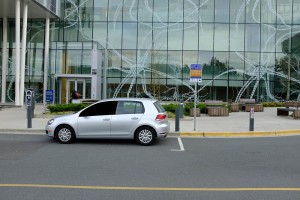By Robin Arnfield
Joe Oliver, Canada’s Finance Minister, announced on April 13 that the Code of Conduct for the Credit and Debit Card Industry in Canada, a set of rules designed to protect merchants and cardholders, has been extended to mobile payments. The move will provide regulatory certainty for Canada’s nascent mobile payments market, particularly given the prospect of Apple Pay coming to Canada this year (http://www.mobilepaymentstoday.com/news/apple-pay-poised-to-debut-in-canada/).
“It’s very early days for mobile payments at the point-of-sale in Canada, but the stakeholders such as the banks and telcos are establishing their positions,” says Christie Christelis, president of Canadian consultancy Technology Strategies International. “There’s very little mobile payments adoption in Canada, as NFC-enabled smartphones aren’t available in sufficient quantities yet. Also, consumers lack awareness about NFC payments at the point-of-sale and need to learn how to load their card credentials onto smartphones.”
However, Christelis says Canadian consumers are enthusiastic about using smartphones for purchases. “They’re already doing a lot of remote mobile payments,” he says. “Also, over the last year or two, I’ve been seeing a lot more contactless credit card payments in stores. Many Canadian POS terminals are already NFC-enabled on the back of the country’s EMV migration.”
A bottleneck to Canadian contactless card and mobile payments adoption is the fact that, while many Canadian credit cards contain contactless chips, there are still few contactless debit cards in issue. This is a problem, as Canada is a large debit card market, Christelis says.
Interac, the Canadian domestic debit scheme, only lists 13 FIs, including CIBC, RBC Royal Bank of Canada, Scotiabank and TD, as supporting its Interac Flash contactless application (http://interac.ca/en/interac-flash/flash-filist). In March 2013, RBC carried out the first Canadian mobile payment involving Interac Flash (http://www.mobilepaymentstoday.com/news/interac-and-partners-demo-canadas-first-contactless-mobile-debit-scheme/).
Code of Conduct
The Code was introduced in 2010 to promote merchant choice, fee transparency and disclosure, and fairness…
By Bill Smith
PHOTO CAPTION: Image shows car above a sensor within the stall and with the signage and meter. This is in front of the Centre for Brain Health (attached to and part of the Hospital)
Single space sensors are one of the most exciting parking technologies to be introduced in recent years. They have quickly gained acceptance throughout the industry because of the many benefits they offer both parkers and parking owners. The most obvious advantage can be found in their parking guidance function. By clearly and accurately indicating where open parking can be found, the sensor technology makes parking more convenient than ever before by eliminating the need for parkers to circle structures and lots looking for an open space. At the same time, the sensors collect data about who is parking in each space and for how long. This is invaluable information for helping owners and operators run their facilities as efficiently as possible.
The University of British Columbia (UBC) in Vancouver has found a new, non-traditional use for this technology. The University recently installed sensors in two areas on campus that have historically had trouble with drivers overstaying permitted parking durations. The areas are intended as drop-off points, but drivers tended to park for extended periods of time, which caused traffic congestion on nearby roadways. The sensors were installed to clearly indicate how long parking was permitted in each space, and encourage compliance with time limits.
UBC’s sensor program utilizes solar-powered Frogparking sensors, which are installed in the ground in each individual space and connected to the university’s parking management grid to provide real-time enforcement and utilization data. Nine sensors were installed at the UBC Hospital Complex and eleven were installed at the recreation center and aquatic centre.
“We began this program last August, and we are already seeing an…
By David Watts
If you drive past the Parking garage at the Ajax GO station, or the Erindale GO station, there is nothing visible that sets them apart from the other dozen or so parking facilities Metrolinx has constructed over the past 2 years.
You must get to the top floor to see the difference – approximately 1,200 solar modules on each of the those roofs, and a purpose built inverter room, designed specifically for the unit that converts the direct current generated by solar modules to the alternating current that powers our houses.
Each garage will generate approximately 342,000 kWH per year, which is the equivalent consumption of 32 or 33 average Ontario homes.
It can also be looked at as offsetting the consumption of the parking facility.
Consumption projections at Erindale showed projected electrical consumption of about 1,000,000 kWH per year. The solar on the roof covers about a third of the annual needs, but if you break it down by season, it covers the summer consumption almost entirely. Winter is another story- the days are shorter and cloudier, and the nights long.
Long term analysis will show us if actual consumption reaches the projected levels, as all the lighting is LED, and lights are on timers and photo-sensors.
How do you plan a solar garage?
It is actually quite simple.
The racking system which connects the solar modules to the building is an engineered, ballasted system. Wind tunnel testing shows us just where we need to place the weight to ensure that the entire array stays put, no matter what nature throws at us.
Typically the universal load for this ranges from 3 PSF to 6 PSF. If the parking facility in the design stage has a top floor that has a minimum extra 7 PSF allowance designed into it, I would call that solar ready….
How Mobility and Social Media Will Change the Industry
By Rachel Levy Sarfin
Technology has changed virtually everything we do, from the way we run our businesses to how we communicate with family and friends. So, it should come as no surprise that it has had an impact on parking. The twin phenomena of social media and mobility have had an especial effect on this space.
Social media and mobility have had an influence on parking in Canada, and Canadians are also using these two forms of technology to improve the way we find parking spots and the way we park. The Canadians profiled in this article are using technology to change the way drivers in Canada and around the world park.
If It’s Not on Facebook, It Isn’t True: Social Media and Parking
Some things have not changed, in spite of technology. If you park well, no one will notice, let alone single you out for praise. On the other hand, a bad parking job would merit you a nasty note on the windshield in the days before social media. In today’s world, you would be lucky just to receive an angry Post-It. More likely, a picture of your vehicle will be posted on popular social networking sites for the entire world to see.
Edmonton residents Daniel Huber and Brian LaBelle have harnessed the power of social media to shame drivers who park terribly. In 2014, restaurateur Huber created a Facebook group called “D-BAG ParkJobs.” The group gives metro Edmonton area drivers the opportunity to upload pictures of poorly parked cars to Facebook and write snarky comments.
Shortly thereafter, his friend LaBelle, a certified child and youth counsellor, decided to start a Twitter account devoted to the same subject. The handle is @DBagParkingYEG. Calgary residents began sending in photos, too. LaBelle then launched Twitter accounts…
By Rachel Levy Sarfin
Canada’s Anti-Spam Legislation (CASL) will come into force on July 1st, 2014. The law has been gaining attention long before it will go into effect, though.
Critics claim it is too broad and overly complicated. Once it comes into force, the law will have an enormous impact on every commercial electronic communication within this country. Robert Burko, president and founder of the marketing firm Elite Email, shared his tips on how to navigate the marketing landscape in the wake of this legislation.
Burko explained that the most important thing to know about CASL is that you must obtain consent from the people with whom you plan to communicate. “Gone are the days of being able to email whoever you want, whenever you want, without caring about whether you have permission to contact that person,” he stated.
Elite Email’s president emphasized that communicators need to obtain consent according to the law’s specifications. Burko added that there are two types of consent: express and implied. “The best type of consent is ‘express consent,’ which is when the person you are emailing has explicitly said ‘Yes, I want to receive your emails,’” he remarked. “The other type of consent is ‘implied consent,’ which is when someone has paid you or entered into a contract with you and a two-year window is created where you can email them.”
Violating CASL will result in hefty penalties. Fines for breaking this law can reach up to $1 million for individuals and up to $10 million for companies. Even non-Canadians can be found guilty of breaking CASL’s rules. The law applies any time someone uses a computer or mobile device in Canada to access a commercial electronic message, which includes emails and text messages. That means that an American business can be liable for penalties if a…
By Jay Gajiwala, Faculty of Science, B.Sc., Spec. Hons. Biology (Biomedical Science)
Tom Arnold Scholarship in Parking Industry Advancement at York University 2014 recipient
To observe how our cities and communities change as time passes is a duty of every resident. As a resident of Canada, I would like to document what I have observed over the years in the transportation and parking industries and the direction that I hope the industries will take in the future for cities and communities across Canada.
Over the last 50 years, the impact transportation has had on our societies is phenomenal. Cities and communities have been built with transportation in mind. At the root of the transportation is the parking industry. In the time when automobiles were a rare commodity, space was vastly available for use. However, as the population owning an automobile grew, the realization came that parking space is not unlimited. This resulted in parking facilities and technologies becoming more important than one could have ever thought.
For a long time, the goal has been to park as many automobiles in as little space as possible. To achieve this goal, we see vertical parking garages raised from the ground so that the limited land in urban areas can be utilized with more efficiency. The importance of the management of parking space is also evident in any downtown core of a city. For example, avoiding on-street parking during rush hours is a great way of using space to its full capacity. These and many other innovations have been geared towards efficient use of space.
In a growing city where parking is limited, many drivers find themselves needlessly wasting time going back and forth for parking spots. To address this, over the past decade parking spot counting systems have evolved in heavily populated areas where parking spaces…
By Bern Grush
Most of us in the parking industry are aware that the days of the parking meter are waning. But these machines will not disappear suddenly. Rather they will experience a long slow decline over the next decade, in many ways repeating what the phone booth has just been through. How meter attrition will be managed is a key consideration for your city’s next meter refresh—especially because it should be your last one. The wrong choice could mean a significant loss.
In March 2014, Dennis Burns wrote about the success of the Washington, D.C. pay-by-phone program: “…the D.C. program has earned 550,000 customers and accounts for 40 percent of the city’s parking revenues. About 80 percent of the seven million transactions to date employ smart phones, with payment options that include credit cards, an online and mobile money management solution, and PayPal.”
When will you go meterless?
While we have come some distance since the first parking meter in the 1930s, we will progress much further in the next few years. As automobiles get smarter, the act of pausing to pay for parking – even on a smartphone – will become unnecessary and increasingly undesirable. High enforcement costs are driving cities toward digital credentials tied to license plates that can be rapidly scanned for payment confirmation. New technologies are enabling more robust analytics that allow flexible pricing management. Older style, curbside meters—both single space meters (SMSs) and multi-space meters (MSMs) delay this progress.
The current supply of on-street meters in North America ranges from a full complement of pay-by-license plate meters, such as in Calgary and Pittsburgh, to none at all. At some point in the foreseeable future, parking will be managed in the great majority of all these cities by all-digital means including phone, Web or in-vehicle, self-paying meters. Accompanying…
By Bern Grush
A self-locating, self-paying parking meter can dramatically improve workflow, enforcement and the political relationship between municipal parking management and its stakeholders. This technology meshes with existing pay-by-phone and pay-and-display systems.
Few parkers are likely to appreciate that municipal parking management is a considerably more complex matter than may appear when they are frustrated by no parking signs, parking citations, poles with multiple confusing instructions, loading zones, handicapped parking, no stopping, variable time limits, too little parking just where they want it, and so on. Municipal parking has many different requirements and there are many stakeholders with conflicting priorities involved in the task of fitting what is sometimes too many automobiles into the scarce spots along our urban streets. In any large urban area and many medium-sized ones, municipal parking management is certainly far more difficult than managing the lots or garages for suburban shopping malls.
Municipalities always want their parking spaces utilized correctly for traffic flow and safety reasons. They generally like to see a sensible occupancy level to ensure a balanced, vibrant commercial downtown—i.e., not so much that access is denied to some or that congestion is inadvertently encouraged. Nor so little that the commercial district might suffer and businesses relocate. Many cities need to generate sufficient revenue to fund the collection and enforcement process, and a significant number even seek to generate a surplus for their treasury.
Business associations want business traffic, including people that arrive in automobiles. This generally results in demand for plentiful free or cheap parking which cities can increasingly ill-afford from a financial or traffic management perspective.
Environmentalists consider the automobile and by association, parking, to be a problem—and they have a point. They may want parking to cost more, or to have less of it available. The logic of parking scarcity to discourage use…
By Neša Matic and Dwight Deugo
The proliferation of mobile devices and our reliance on them for a multitude of our daily tasks and activities has had an impact on the way we use parking services.
Today, mobile parking services, which are relatively new in Canada, are bringing the benefits of improved convenience of mobile payment and mobility. However, they are also seen as the first steps towards the future of mobile parking, where social media, location-based services and machine-to-machine communications (M2M) play important roles.
While the market adoption of smartphones is shifting the mobile landscape towards high-end users with growing data plans, mobile parking systems aiming to capture wider audiences will continue to embrace the mobile “basics”: text messaging (SMS, short messaging service) and voice technologies (voice recognition). By taking this approach, they significantly expand their target market of prospects and customers, including non-data mobile users (pre-paid), and are able to cater to a wide variety of devices (iOS, Android, Windows).
In Ottawa, there are a few mobile parking payment systems already in operation. This article looks at one such system currently deployed at Carleton University and Algonquin College, through the eyes of two of its users and two of its vendor parking managers. The graphs below show the adoption rate of mobile parking payments at the Carleton University and Algonquin College.

Emilie is a Carleton University student. She normally uses public transportation, but twice a week she drives her father’s car to school. Emilie’s father registered his credit card and Emilie’s mobile phone details with Carleton University’s mobile parking payment system so she can use her mobile phone when parking in one of the university’s lots.
Always in a hurry, Emilie is often late for class. She parks her car in the P1 parking lot…












